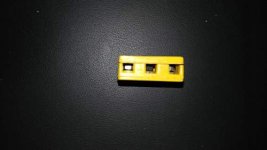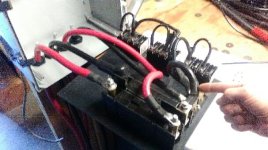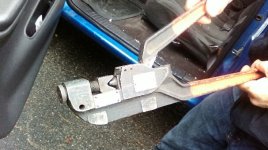Supreme Kay
10 mW
I am having a recurring issue, the 3 phase wire of my e-bike keep melting. I had them set up into a three wire block (see picture). I own a dual voltage e-bike 36v/48v e-bike (KT3 e-bike LCD) and my controller (KT36v/48v) is rated for 36v/48v 22 amp max current. As of now, I have a 36volt 11ah battery that has a BMS with 20 amp max discharge, I bought a 48v 10.5 ah battery a few days ago (the battery is still on the way). I am considering using Anderson power pole (from here:https://www.amazon.com/gp/product/B01HDZ91G8/ref=oh_aui_detailpage_o05_s00?ie=UTF8&psc=1) to connect the three phase wire of my e-bike hub motor to my controller hoping this will solve the wire melting issue I am having. I am not skilled with soldering, therefore I am looking into connector allowing to crimp wire to the connector. I am upgrading to a 48v battery and I am looking into solving this issue permanently because the 48-volt battery is going to generate more heat. According to the seller, the connector and housing of the Anderson Powerpole connector have a maximum operating voltage of 600 volts AC/DC and an operating temperature range of -4 to 221 degrees Fahrenheit.I would appreciate any opinion and suggestion that could help remedy my issue. My e-bike is my daily drive Thank for taking the time to respond to my post. I bought my motor from eBay from this seller: http://www.ebay.com/itm/322247604604?_trksid=p2057872.m2749.l2649&var=511147989362&ssPageName=STRK%3AMEBIDX%3AIT
I purchased the 500watt motor which has 35.5NM torque. Can please provide a link of connectors I could purchase to solve this issue?
I purchased the 500watt motor which has 35.5NM torque. Can please provide a link of connectors I could purchase to solve this issue?





